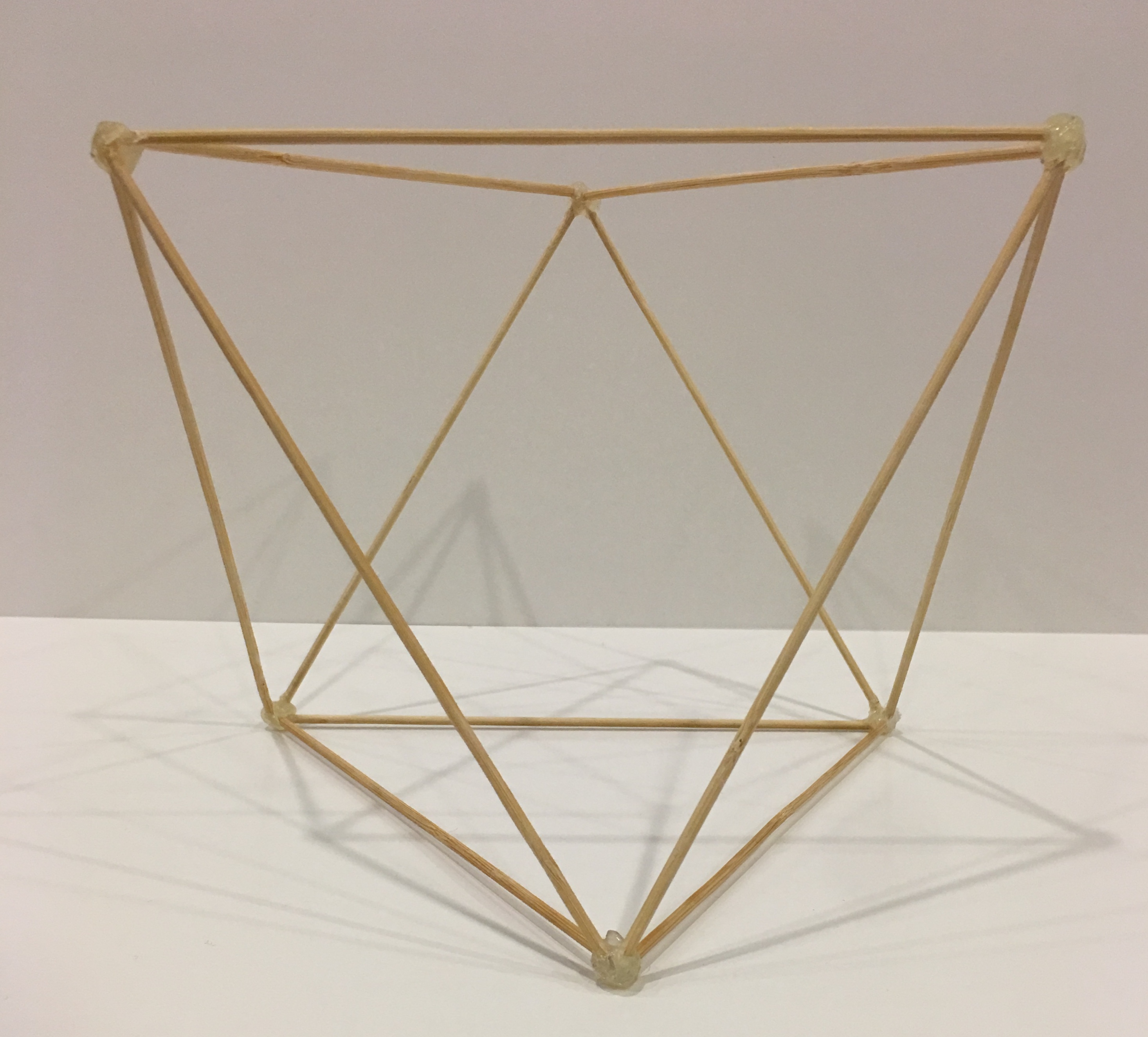https://drive.google.com/file/d/1XIxkKkYJXPaIdgkW4txx-DMKgG8AeENs/view?usp=sharing
Vito Acconci Artist research
https://docs.google.com/presentation/d/1UYJRP3j2fi1wmSndTWSkUMS-cotjWRm2BWfTiKZQPTM/edit?usp=sharing
2A – Polyhedron Dreams
Linear Model (1st Model)
For my linear model, I chose the octahedral shape.
Planar Model (2nd Model)
My initial idea for the planar model was to keep the design basic and simple so that the octahedral shape can be best represented. So my first prototype had a very simple and symmetrical design.

The planar model is created by sliding 4 triangular pieces of cardboard into a square piece of cardboard. Slits were created in each piece so that they can interlock with each other. The size of the square piece is made smaller such that the ends of each triangle sticks out to give the planar model a more interesting look.
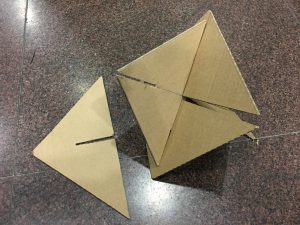
However, while making the third and final model, I decided to use the above design as the base for the sculpture. I did not want the base of the final model to be the same as the planar model, and in consideration that the original planar model might look too simple, I changed the design of the planar model to add more dynamism, creating the final planar model as shown below in various angles.




Combination of Linear and Planar Model (3rd Model)
For the 3rd model, I decided to go with the idea of the planar model exploding. Rather than making an exploding octahedral, I decided to make a sculpture which shows the process of the octahedral exploding to show more movement. I created a series of prototypes with the idea of the octahedral being stretched, released and finally exploding.
Original Octahedral:

Elongation (Stretching):

Compression (Releasing):
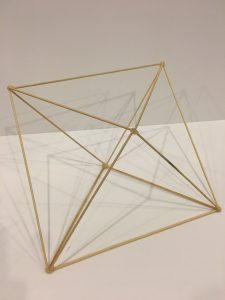
Exploding:

Final Prototype look:

Based off the prototype, I proceeded to make the final model. The following is the process:


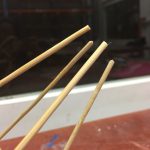
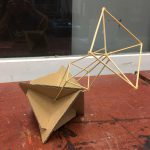



From the prototype, it can be seen that the nature of the sculpture is that it hangs at the tip and sprouts outwards. The heavy weight at the top of the sculpture is too much to bear and the sculpture is unable to stand upright on its own, having to use tape to hold the sculpture up. I did not use supports for the top part as I did not want the supports to look like they are part of the sculpture. Hence, I had to scale down the final sculpture to make it lighter overall. I used cardboard and adopted the original planar model as the base to give the base weight which will help to weigh down the entire sculpture. I completed the stretching and releasing parts with skewers because they are lighter and the lines formed places emphasis on the movement. The strings on the stretching part gives the idea of elongation. The exploding part is made with cardboard and wire because the wire is flexible for free-form explosion and the cardboard links back to the original planar model. The overall sculpture is modelled to look higher and straighter forming less of an arch as compared to the prototype to put less weight at the tip of the sculpture so that the sculpture can stand on its own. However, as seen in the process pictures, the sculpture was still unable to stand on its own. Hence, I decided to add extra weight to the base.
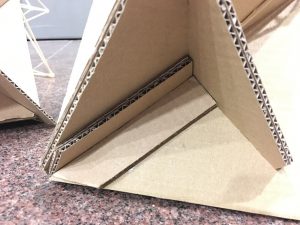
Final Look:




Presentation Boards:







